Natural forms at Six Points Interchange Reconfiguration; setbacks between images at Dead Man’s Curve
Below are some images I have put together after a visit to the Six Points Reconfiguration site.
Image 1: Water leaves traces of its passage
Image 1 depicts traces of the flow of water. Was the water going left to right, or right to left? I have not studied the evidence. I am not an expert on fluid mechanics in the analogic (non-digital) world of water and soil. Nor am I an expert in the mathematics of fluid mechanics.
I do note that when the mud has dried, a crack on the surface has appeared. The crack has made its presence known. One is reminded of the expression, “the crack of dawn.” One is reminded of the aural phenomenon of “the crack of gunfire.”
One of reminded of The Poetics of Space by Gaston Bachelard. That is one of the books that made sense to me, in the 1960s. What Bachelard said then, in parts at least, rings true for me now, as it did then.
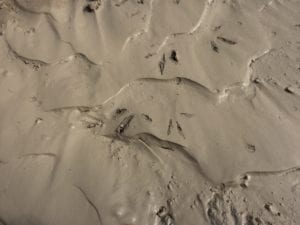
Image 2. We see more clearly the bird tracks that were evident (but not as clearly framed) in Image 1. Jaan Pill photo
As, by way of example, and this is from the link in the previous paragraph: “A house that has been experienced is not an inert box. Inhabited space transcends geometrical space.”
The first paragraph in the above-noted link, from Harvard Design Magazine, aptly relates to Bachelard’s meditation on oneiric space – that is, the space relating to dreams or dreaming.
What is true of the poetics of space, as they relate to the poetics of the interior of a house is also true of the poetics of the world outside, as Bachelard notes in his philosophical analysis.
Once we get outside a house, we enter into the public realm – such as the open spaces of a community, and, indeed, the setbacks between houses, a topic of much interest to many of us, in our role as residents of cities, as you will note in the event you feel inclined (or impelled by curiosity) to do a search for “setback” at this website.
In the public realm, we also deal with the poetics of space, to use Bachelard’s apt expression.
When we are outside of the house, where we sit, and pace, eat, and have our repose, we may be in the public realm.
If we go a little further, which in Canada it is possible for almost any person who lives in a town, village, or city to do, assuming she or he has access to a means of transportation, or a means of sustenance in the event she or he wishes to walk or ride a bike, our exploration of the poetics of space continues apace.
In Canada, one can enter into what remains of the wilds, of the wilderness. In my childhood growing up in Montreal, what we knew as the nearby wilderness was called The Bush.
I am speaking, in this context, of existence in nature.
A person can make of a forest a hiding place, a place of repose, a place to pace, a place to eat, in the same way as a person can find a place to do these things – perform these activities – inside of a house.
Within a forest, or at the edge of it, one can experience all of the poetics that are associated with a house.
I mention that, because I have experienced the poetics of the forest, in my case on Haida Gwaii by camping in the roots of a hemlock tree, at the edge of a rain forest at the outskirts of Queen Charlotte City in the early 1970s. I lived in said roots for six weeks.
The experience of living in the roots of a giant hemlock tree, at the edge of a Haida Gwaii rainforest, has been among the most blissful and healthiest times that I have experienced. My time on Haida Gwaii is among the formative experiences of my life.
On one of my visits in the early 1970s, before I went back to complete a degree at Simon Fraser University, I walked for some distance along the east coast of Haida Gwaii near Queen Charlotte City. I realized I would be able to walk kilometre after kilometre, if so inclined, and see pretty well no trace of Western civilization, as it is called. Among other things, said civilization has been characterized – that is, described, as one would describe a character in a story – as a massive pyramid scheme. For example, Ronald Wright, author of A Short History of Progress (2004), has thusly characterized it.
That being said, Western civilization is not without its merits.
To return to my Haida Gwaii story: The natural splendour – the mountains, the sea, the clouds – was of a nature that was spectacular beyond words. The concept that, not all that far back in human history, such a scene – the scene of natural splendour, as yet untouched by Western civilization – as I witnessed on that day, was available to be witnessed by any person across the face of the Earth, took hold of me. It took hold of me as an overwhelming realization. It’s a powerful concept. A visualization of times past, based on a brief sampling of a spectacular, large-scale natural scene, serves as a starting point for thought – a starting point of the journey of one’s imagination.
I am pleased I did not run into any grizzly bears. That’s always a consideration. I mention that in passing.
The poetics of space extends beyond the homes associated with the Settler culture that in the Americas (“officially”) dates back to 1492. From the perspective of the Indigenous citizen, according to one apt tweet that I have read, if you want to imagine what would have occurred had the Nazis won the Second World War, you do not have far to look. I say this, on the understanding that I have no means of speaking on behalf of the Indigenous citizen.
As part of my self-education, I follow many First Nations individuals and organizations on Twitter.
Image 2: Bird tracks
So much for image 1; I have discussed that Six points photo earlier. I have not yet posted image 2, as I write this text. I am thinking that the second image, in this digressive post, will perhaps involve a closer look at water flow in the analogical (that is, non-digital) reality.
In the case of Image 2, the water flow appears to have been from top to bottom, with ridges appearing in the irregular forms that were created in the soil, in response to the water flow.
The word “irregular” brings to mind the concept of “irregular warfare,” which I have written about in recent posts. I do believe that all of warfare is irregular, and always has been. Now, in recent times, the inherent irregularity of warfare – of organized violence – has been recognized, through use of terms such as “hybrid warfare.” But – I digress!
I’m pleased to see evidence that a bird had walked along the mud, in Image 2, before the mud had dried, and thereby left its signature.
Image 3: Divided roadway
In a previous post, I have referred to the Brown’s Line Dead Man’s Curve. If you would like to read that post, you will have to do a search for it using this site’s internal search engine.
The latter post does not include a lot of photos. That’s because the process of searching out photos tends to be consuming of time and energy, especially given that my photos exist in files devoid of tags.
Image 3 is a shot, that indicates what a driver sees, when approaching Dead Man’s Curve at the southern terminus of Brown’s Line, as you bomb out of Alderwood and approach Long Branch.
I refer to bombing as in “going faster than prudence dictates.” What the driver sees is the first of four signs that will appear.
Image 4: Speed sign
Image 4 is the speed sign, the second sign that you see as you speed toward Dead Man’s Curve.
The second sign says, “30 kph,” for which the subtext is, “Are you kidding?”
In speaking of a subtext, I refer to what a July 20, 2017 New York Times article describes as “bracketed stage directions.” The Times article, about current news from the White House, is entitled, “Like a ‘Soap Opera,’ Only Not as Fun.” The article, which I read in the print version, refers to choices with reference to genres, when a person is following the narrative arc of a story.
No question, any story related to the Dead Man’s Curve involves choices from a range of options, according to which a narrative arc, related to vehicular flow heading south on Brown’s Line, is constructed.
Image 5: Not a great idea to stop to park
The third sign (Image 5) says, “No Parking,” for which the subtext is, “Just so you know.”
The fourth sign says, “Sharp turn right,” the subtext for which reads, “Sorry, too late.”
Setback between first and second signs
Now, signs, like houses, usually do not exist in isolation.
In a house, to refer to the poetics of space, the interior space has meaning because people inhabit said space. By itself, a house does not offer a lot of meaning. You need people in the space, to establish meaning.
In the wilderness, the meaning is inherent in the space. Under ideal circumstances (in my opinion), the human adds little or nothing, by way of meaning.
That meaning a human may add, in some circumstances, may be a meaning that is, indeed, in harmony with the space.
In the case of Settler history, however, the inherent meaning in the space tends to lose meaning, because Settler society – of which I am, indeed a member – in its history has established a narrative that says, “This space has no meaning. The only meaning that inheres in this space is the meaning that we as Settlers establish through the Logistics of Words and Figures.”
That’s a preamble, a foreshadowing, to my conclusion of this digression, this digressive exercise.
Signs on a roadway do not have meaning, except in the context of the meaning that is assigned to them, if any meaning is assigned to the signs at all, by the driver (and passengers) who are travelling, at whatever rate of speed, on a given roadway.
The first and second signs, that you see as you get close to Dead Man’s Curve, are very close together.
Image 6: Sharp turn right
The setback between them is very tight. Imagine two houses very close to each other. The setback between them is very tight. That may or may not be read as comfortable, depending on many things.
Because of the tight setback between the two signs, the second – and critical – 30 kph sign – is apt to not be read closely, if it is read at all.
Thereby ends a story.
Update
A July 20, 2017 Longdon School of Economics article is entitled: “Book Review: The Great Derangement: Climate Change and the Unthinkable by Amitav Ghosh.”
The opening paragraph reads:
In The Great Derangement: Climate Change and the Unthinkable [2016], acclaimed novelist Amitav Ghosh offers a new non-fiction work that aims to confront this urgent issue by reflecting on our ‘deranged’ modes of political and socio-economic organisation via three themes: literature, history and politics. This is an admirable book that both examines and manifests the limits of human thought when it comes to the spectre of environmental catastrophe, writes Alexandre Leskanich.
End

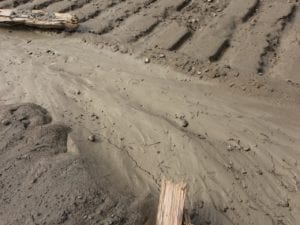
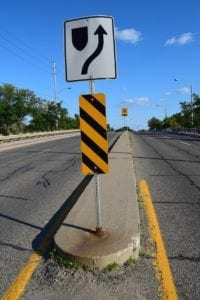
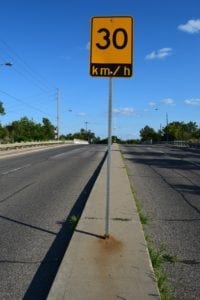
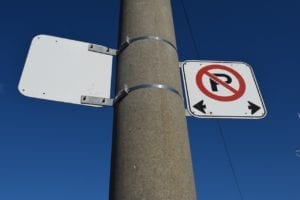

Leave a Reply
Want to join the discussion?Feel free to contribute!